
Building Confident Math Students with a Growth Mindset
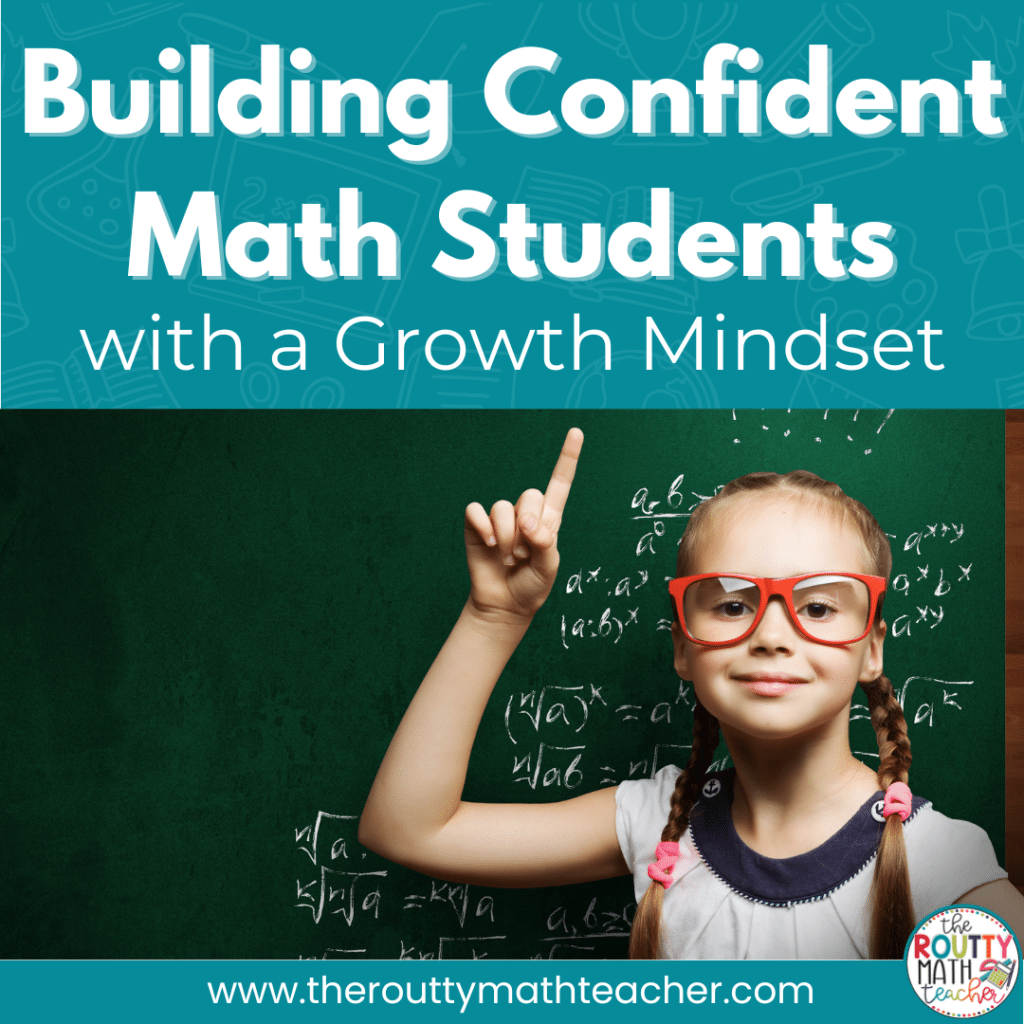
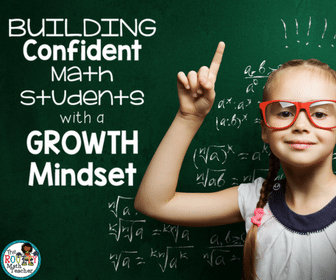
If you were to take a poll of the number of parents in your classroom who think they are bad a math or that they are “not a math person,” what percentage of your parents would be in that category? I’m guessing unless you live in a community that is full of engineers the percentage would be greater than 50%. Historically, math has been that subject where some people tend to decide early on that it is not for them. In fact, in a 2015 Shadowcon presentation, Tracy Zagar shared some statistics about teachers and mathematics:
- When asked to draw images that reflected what math was like for them in grade school, 63% of the images drawn by pre-service education students enrolled in a math methods course were negative.
- One in three elementary school teachers have math anxiety or have a negative opinion of math.
These statistics are astounding but do reflect what research says about how people view mathematics. So, the big question– how do we change it? There is certainly no simple answer to this question, but we can start by helping our students develop a healthy confidence and love for mathematics.
In 2016, Jo Boaler, a renowned mathematics professor, researcher, and author, wrote a book titled “Mathematical Mindsets” that sparked a lot of discussion about mindsets and about how we, as educators, can use them to change our students’ learning pathways and allow them the opportunity to achieve higher levels of success.
Throughout the text, the author presents research that tells a story about how our brain works. Here’s what we know:
- As we encounter new ideas, electric currents begin to fire in our brains making connections between the various areas and regions– the more complex and intense the new learning, the more lasting the connections will be.
- There are two types of mindsets: fixed and growth.
- Students who shut down when they reach their frustration point because they foster a belief that being good at math is an intelligence which you obtain at birth have a “fixed mindset.”
- On the other hand, students with a “growth mindset” believe that the intelligence needed to be successful in mathematics can be gained through effort.
- Making a mistake is good! It lights up our brains causing it to “spark and grow” (Mathematical Mindsets, p. 12) even when we don’t know a mistake was made.
- Coupled with a growth mindset, when an individual believes he or she has the ability to learn and that mistakes are just part of the learning process, mistakes will cause our brains to grow, especially when we participate in challenging tasks.
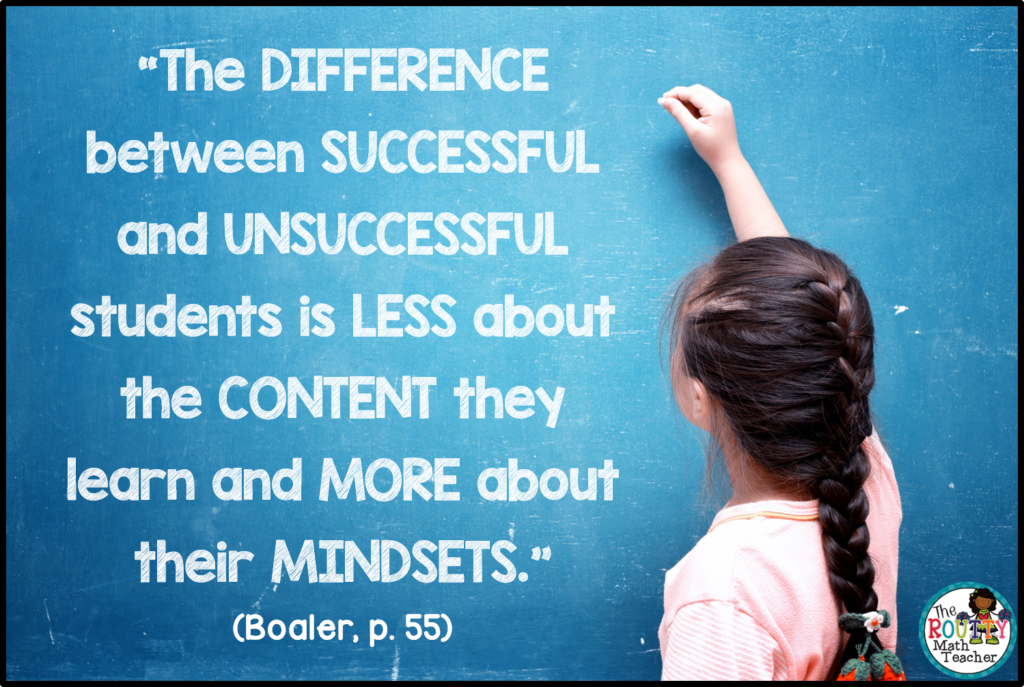
So what does this mean for us as educators? Here are 8 ways to use this research to build confident math students with a growth mindset:
1. Provide short, prolonged opportunities to interact with new skills so that students’ brains have the opportunity to make connections and change structurally.
2. Foster a belief that no one is born “good at math.” Rather, emphasize the idea that making mistakes is part of the learning process and how we grow as mathematical thinkers.
3. Provide feedback that is related to actions and not student characteristics. For example, say, “Your work shows that you thought a great deal about how to approach this problem” instead of, “You are so good at this!”
4. Use Jean Piaget’s concept of “disequilibrium” to promote a growth mindset. Helping students understand this concept will send two important messages: 1.) It’s okay not to know the answer right away and 2.) It’s okay to struggle (Carter, 2008). Providing tasks that put students in a state of disequilibrium will help them develop and understand the role of productive struggle in the successful learning of mathematics.
5. Celebrate and highlight mistakes! To introduce the idea, consider reading The Girl Who Never Made Mistakes. (See it on Amazon here!) The book tells the story of what happens when Beatrice Bottomwell, The Girl Who Never Makes Mistakes, makes her first mistake. Beatrice makes her first mistake while juggling at her school talent show. But, instead of crying and getting upset, she laughs about it. Making a mistake changes Beatrice’s life and her attitude! After the reading, pose the following questions: 1.) Explain how Beatrice reacted when she made a mistake during her performance? She laughed instead of crying or running away. Why do you think that is? 2.) How can you learn from your mistakes? 3.) How do you think Beatrice felt when everyone began calling her just “Beatrice” at the end?
6. When reviewing assignments, move from analyzing assignments for correctness and begin to analyze them for mistakes. We should ask ourselves, “What do the mistakes reveal about where my students are in the learning process?” Then create an appropriate plan of action to address the mistakes. “My Favorite No” is a teaching strategy that exemplifies using mistakes to drive instruction. Click here to see the strategy in action in a real math classroom.
7. Investigate the role of mathematicians. Post a chart entitled, “How to Think Like a Mathematician” with verbs that describe what mathematicians do, such as wonder, guess and check, ask questions, make conjectures, make connections, solve problems, etc. Continue adding to the chart throughout the year as students find other verbs to describe the work of mathematicians. When solving problems, refer to the chart and ask students to reflect on something that they did that made them “Think Like a Mathematician.”
8. Ask students to wonder! I love to use Dan Meyer’s 3-Act Mathematical Stories for this. For example, show the students the video portion of the Girl Scout Cookies 3-Act with no leading information. Just show the video. After the video is over, go back to the 17-second mark and pose the question, “What are you wondering now?” Allow students to contribute their ideas during a class discussion before focusing on what question to tackle. This 3-Act is set-up to answer the question how many boxes fit in the trunk; however, there are many other questions to explore. Once a question is determined, discuss how students will investigate the question and find a solution. The beauty of this task– it’s tough to find an exact answer, so the focus is on the process, not the final answer. Give it a try!
Sound Off! How will you foster growth mindsets this year? Respond in the comments below.

Reference:
- Boaler, J. (2016). Mathematical Mindsets. San Francisco, CA: Jossey-Bass
- Carter, S. (2008). Disequilibrium and questioning in the primary classroom: Establishing routines that help students learn. Teaching Children Mathematics, 15(3), pp. 134-37.




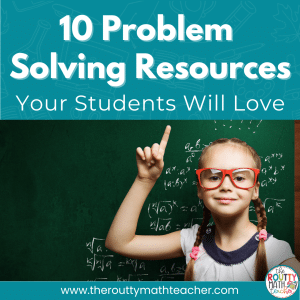
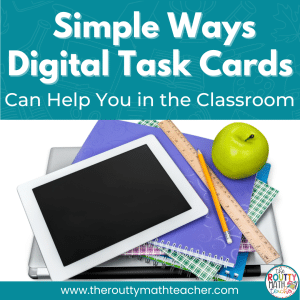
2 Responses
Just found this while I was searching for info about Tracy Zager. What a great post! Thanks.
Hi Tosha!
I’m so glad you found the post useful! Please come back and visit again. Thank you!
Shametria